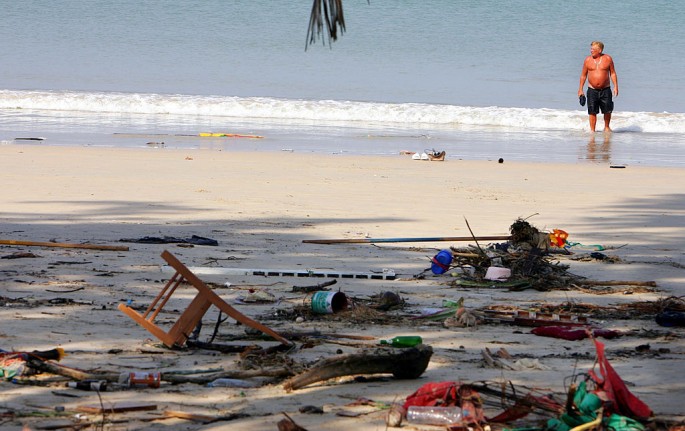There is a nine percent chance that Hawaii will face a devastating tsunami within the next 50 years, created by a mega-earthquake hitting the Aleutian Islands. These are the findings of a new study conducted by researchers from the University of Hawaii at Manoa.
The research team used computer models to predict the overall chances of a disaster hitting Hawaii and Aleutian Islands in the next half-century. According to a report released previously by the State of Hawaii, it is estimated that such disasters will affect more than 300,000 lives and cause a damage worth $40 billion.
Hawaii is considered to be at a risk of tsunami created by an earthquake hitting the subduction zone of the Aleutian Islands. A subduction zone is a system of multiple faults.
The research team from the University of Hawaii used their knowledge of plate tectonics to create a numerical model. The team specifically looked at the fault length and the plate convergence rate to come up with the model.
To validate that their model works well, the team used history and evidence of seismic activities related to the five biggest earthquakes that has hit since 1900, including Kamchatka (1952), Chile (1960), Alaska (1964), Sumatra (2004) and Tohoku (2011). All of these earthquakes measured more than 9 on the Richter Scale.
"These five events represent half of the seismic energy that has been released globally since 1900," lead author of the study, Rhett Butler, said in a press statement. "The events differed in details, but all of them generated great tsunamis that caused enormous destruction."
In addition to the earthquake data, the research team also took a note of the tsunamis that have hit Earth in the past. The team derived the evidence from the geological layers in coastal sediments, archaeological sites and volcanic tephras. Using refined probability estimates, the researchers were able to assess the risk of an earthquake hitting the Aleutian Islands.
The research team is now planning to expand their research to smaller earthquakes of magnitude between 7 and 8. The following video shows footage of the massive tsunami that hit in 2004:



























